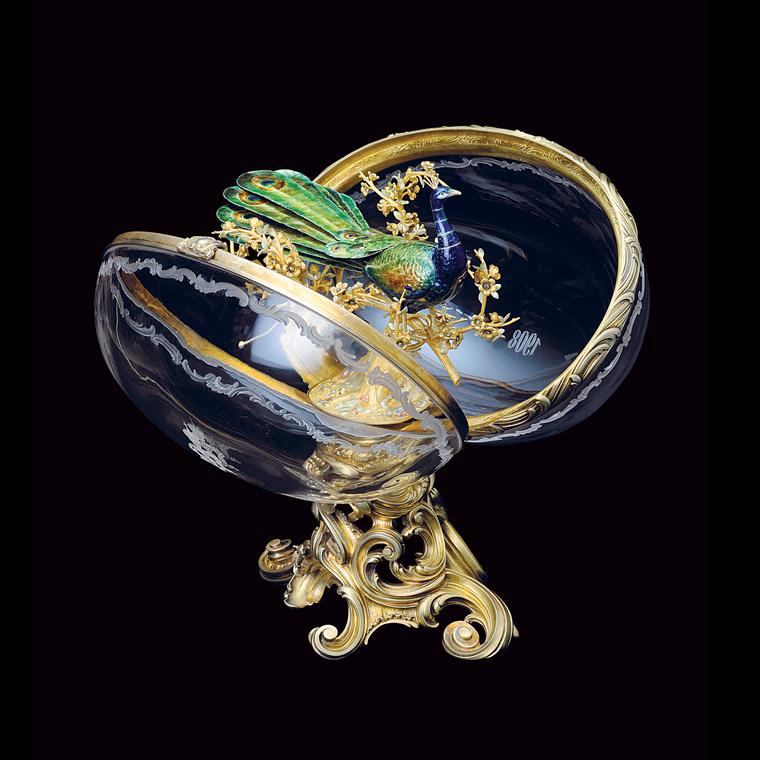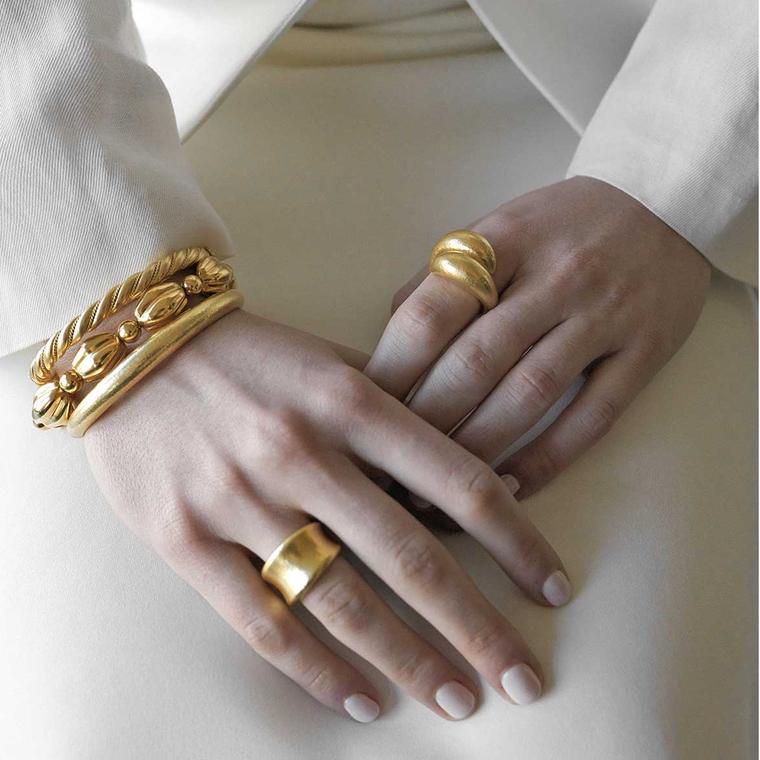Amongst jewellery lovers, the name Lalaounis has almost mythical status. From the sun-bleached land of gods and olive groves, the Lalaounis we know today was founded in Greece in 1941 when the young Ilias Lalaounis was asked to take over the three-generation old family business during the war years. Ilias had no formal training in jewellery making but he was a competent businessman and well-read intellectual who loved history. For over a decade he ran the business much as it was, producing generic jewels with little reference to his homeland. In the late 1950’s the country opened up to tourism and the glamour of Onassis and Jackie O lured the world to its sparkling sapphire waters and island idylls. These visitors to the Hellenic republic wanted to take home a jewel steeped in the country’s history.
The unmistakable Lalaounis look of all-gold jewels hand-hammered into evocative and often outsize ancient forms was inspired by Ilias’ love of antiquities. As an avid historian, his first port of call was the museums of Greece from where he copied designs and techniques bringing the beauty of antique artefacts to life in 18-carat and 22-carat gold. Lalaounis’ workshop in Athens, was at the foot of the Acropolis and benefitted from the rich tradition of jewellery-making of this city that sits at the heart of Mediterranean civilisation. The jewels proved to be a huge success but not one to stand still, Ilias refined his approach and embarked on a journey of seeing art as an inspiration be it Greek, Minoan, Hellenistic, Classical, Byzantine or even from beyond. From the classic Hellenistic Lion Head bracelet to the starkly elegant serpent bangles, Ilias Lalaounis forged a look that put Greece on the jewellery map.
Since 2000 his four daughters Aikaterini, Demetra, Maria and Ioanna continue the quest of creating timeless jewels with a fresh relevance. Family lore recounts that straight from the maternity hospital each daughter was first taken to the Athens workshops before going on home. The Lalaounis girls spent holidays hammering jewels, baking enamel or sawing at gold and between Aikaterini, Demetra and Maria they have grown the business to an international level. The youngest sister Ioanna is Director of the Ilias Lalaounis Jewelry Museum founded 1993 in what was the original workshops. The Ilias Lalaounis Jewelry Museum is a non-profit organisation and today, the permanent collection includes over 4,000 pieces of jewellery and micro-sculptures designed by the museum’s founder, Ilias Lalaounis, between 1940 and 2000.

Today Lalaounis employs 34 craftsmen and women who make each piece by hand. Despite their weighty history, each Lalaounis jewel is effortlessly contemporary. Maria Lalaounis is the Creative Director and she is clear about the role of the past: 'The designs from the past never die, I find ways to bring new life to them by making them lighter, scaled-down and easier to wear. I often take iconic designs from my father and incorporate details into new pieces.'
While the designs may feel at home in the most chic nightclub on Mykonos, the techniques are mainly traditional. As their forefathers did, Lalaounis designs use 18 or 22-carat gold to achieve a soft glow as well offering maximum malleability for certain techniques. Beyond the ever-changing current collections, the house archives contain over 5,000 sketches that can be made to order including one-of-a-kind high jewellery pieces.
Hand-hammering is the technique that the house is most famous for and the dint of small hammers echoes around the workshop as repeated strikes of the rounded head creates a rich pattern of soft indentations as favoured by the Ancient Greek goldsmiths. Granulation is the skill of placing small beads onto surfaces to create intricate highly textured patterns and brought up to date in collections such as Glory of Byzantium. Even older is filigree work, which uses fine threads of gold and grains to create light as lace open-work jewels or to build up elaborate patterns on a surface. The Epirus earrings, chains and rings use an Ancient Roman technique of piercing gold called opus interassile for a fluid and feather-light big look. The Hellenistic tradition of weaving gold is deployed to create supple hand made chains such as the Hercules knot from the Hellenistic collection. Gold is embossed using the repoussé technique that dates back to the Bronze age to achieve complex, multi-level patterns as seen on the iconic animal jewels. Gemstones and diamonds are employed more liberally than in the early days of the firm, but still chosen with an eye to the past as a complement to the gold and often in soft cabochon forms and then carefully hand-set as they would have been centuries ago. But the shapes are more delicate, easier to mix and match and stack and appealing to a new generation of Lalaounis fans. With ten children between the four daughters, it is safe to say that the sisters understand a wide range of tastes and budgets.
With these four formidable women at the helm, Lalaounis is creating jewellery for cosmopolitan women who can embrace the past and the present with elegant ease. ‘From beach to work to dinner under the Athens or New York sky, our jewellery works and is designed for women to easily wear all day long, dressing it up or down according to everyone's individual style,’ explains Demetra Lalaounis, Director of International Business. For over 80 years, the bold forms of Lalaounis jewels are now recognised the world over, confirming that Ilias’ vision was on the mark. It’s not just the styles of the jewels themselves that evoke the arc of Greek history from Neolithic starkness, Classical Greek elegance, the opulence of Theodora’s reign, Byzantine splendour to Hellenic glamour, but the very materials and techniques that imbue them with that special Greek touch that makes Lalaounis so very unique and desirable.
































